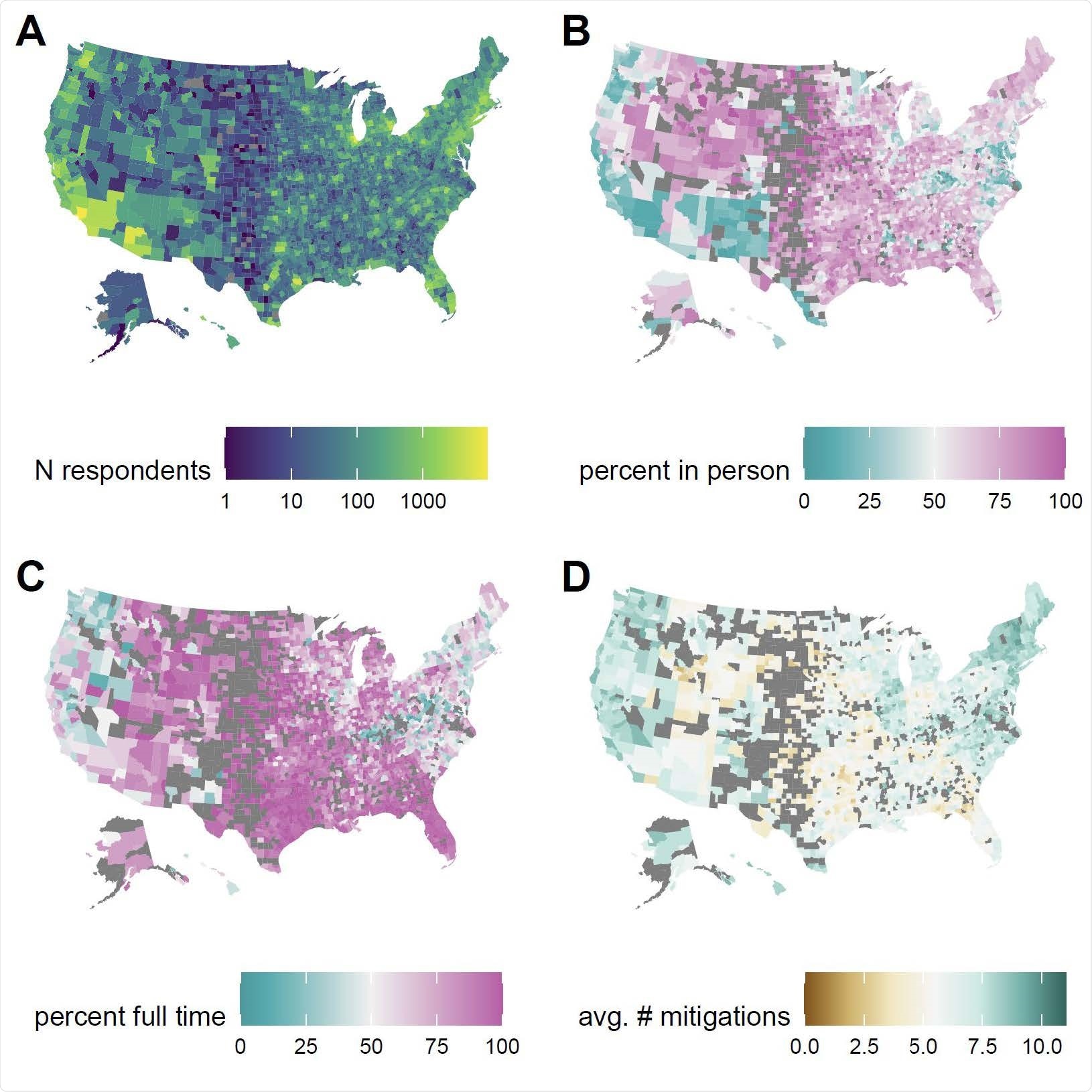
When researchers analyzed the responses of the COVID-19 Symptom Survey in the United States, they found an increased risk of COVID-19 for household members when children had in-person schooling.

One challenge of COVID-19 preventive strategies has been determining the role of in-person classes in schools on transmission. Some studies have reported numerous outbreaks in schools with in-person classes. In contrast, others have reported limited transmission within the schools and the larger community when proper preventive measures are in place.
However, the influence of schools on COVID-19 transmission is complex. Even if transmission within the school is rare, other associated activities such as school drop off-pick up and interactions with teachers may increase community transmission.
There is also evidence that suggests children below 10 years are less susceptible to infection, but it is unclear how likely they are to pass on the infection to others. One reason for understanding the effect of in-person schooling is the risk posed to teachers and family members. But, studies have not looked at the risk of school openings on household members of the schoolchildren.
In the United States (US), there has been a great non-uniformity in schooling approaches in 2020-2021, ranging from a complete stop to in-person classes to complete opening with no preventive measures in place. Although many schools that have opened have some types of mitigation measures, the methods vary greatly.
There is no database of all the different measures taken in the 130,000 schools across the US or the health outcomes. Some data are available for the public school system, but there is no data for about 28% of students who attend private or charter schools.

Analyzing survey responses
In a new study posted to the medRxiv* preprint server, researchers used data from the COVID-19 Symptom Survey to correlate school opening and COVID-19 transmission to household members. The survey is administered via a Facebook platform and received about 500,000 responses each week. The questions are related to COVID-19 testing and symptoms and the schooling of any children in the household.
The team analyzed data for two periods during the 2020-21 school year. Of the more than 2 million respondents across the US, about 27% reported at least one school-age child living in their household. Of these, 49% had children going to school full-time or part-time.
The analysis showed that living with a child going to school full time is associated with a high risk of COVID-19-like illness and a positive severe acute respiratory syndrome coronavirus 2 (SARS-CoV-2) test. The association increases with increasing grade levels, with no association in households with children only in kindergarten or below to a strong positive association for households with only high school-going children.
For households with children going to school part-time, the association is reduced but statistically significant. There was no clear trend with grade levels.
Preventive measures in schools lower risk
Mitigation measures varied across the country, with households in South Dakota reporting the least measures and households in Vermont the most. Schools with students going in-person part-time had more preventive measures than schools with students going full-time. Measures included masks for students and teachers, the spacing between desks, and restricted entry.
The authors found a strong correlation between mitigation measures and the risk of COVID-19 in the households of school-going children. Each prevention measure was associated with a 9% decrease in the odds of COVID-19-like illness and a 7% decrease in the odds of a positive test. However, part-time in-person schooling was not associated with a decrease in the risk for COVID-19, accounting for all other measures.
When more than seven or more mitigation measures were in place, risks associated with the in-person school were low and completely disappeared when there were 10 or more measures in place.
Thus, the results show a clear association between in-person schooling and COVID-19 in adult household members. A reasonable number of preventive measures are enough to almost eliminate this risk. However, it is possible that other unmeasured factors cause these associations.
The authors found that teachers working outside the home were more likely to have a positive test than teachers working from home, but this increased risk was similar to those in other professions who worked outside the home.
Although there are still many unknowns, “The results presented here provide strong evidence that in-person schooling poses a real risk to those living in the households of students, but that risk can be managed through commonly implemented school-based mitigation measures,” write the authors.
*Important Notice
medRxiv publishes preliminary scientific reports that are not peer-reviewed and, therefore, should not be regarded as conclusive, guide clinical practice/health-related behavior, or treated as established information.
- Lessler, J. et al. (2021) Household COVID-19 risk and in-person schooling. medRxiv. https://doi.org/10.1101/2021.02.27.21252597, https://www.medrxiv.org/content/10.1101/2021.02.27.21252597v1
Posted in: Child Health News | Medical Research News | Disease/Infection News
Tags: Children, Coronavirus, Coronavirus Disease COVID-19, Respiratory, SARS, SARS-CoV-2, Severe Acute Respiratory, Severe Acute Respiratory Syndrome, students, Syndrome

Written by
Lakshmi Supriya
Lakshmi Supriya got her BSc in Industrial Chemistry from IIT Kharagpur (India) and a Ph.D. in Polymer Science and Engineering from Virginia Tech (USA).
Source: Read Full Article